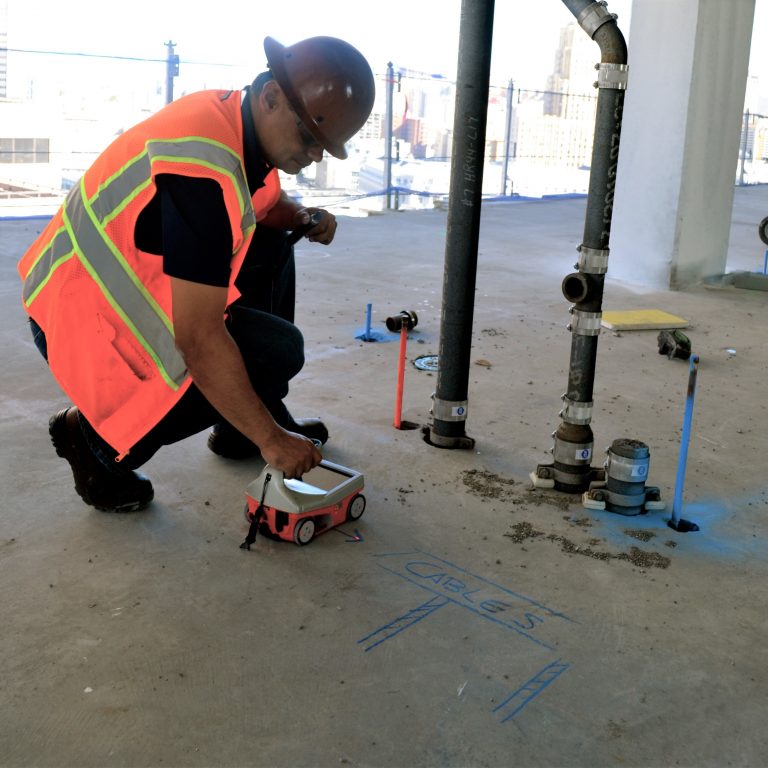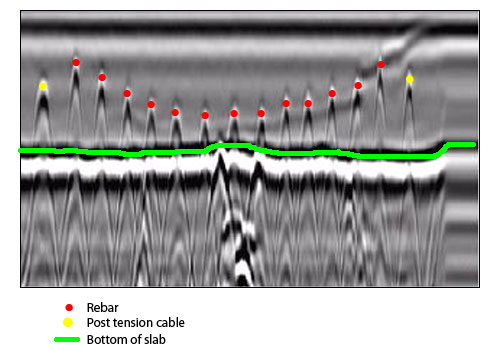Discover Hidden Obstacles with RainierGPR Concrete Scanning Innovation
Discover Hidden Obstacles with RainierGPR Concrete Scanning Innovation
Blog Article
The Importance of Specific Concrete Scanning in Finding Underground Hazards
The ability to properly find and map these underground hazards is not just a matter of convenience however a critical aspect of guaranteeing the safety and security of both building workers and the stability of the project itself. By releasing sophisticated scanning modern technologies and approaches, professionals can reveal covert threats, prevent pricey damages, and inevitably pave the means for smoother and much safer building undertakings.
Advanced Scanning Technologies for Discovery
Cutting-edge radar systems are revolutionizing the area of underground discovery by providing unrivaled accuracy and effectiveness. These advanced scanning modern technologies use ground-penetrating radar (GPR) to develop in-depth photos of subsurface frameworks, supplying understandings into what exists under the surface with remarkable clarity. By releasing high-frequency pulses right into the ground and gauging the representations, radar systems can determine variations in material structure and detect underground threats such as pipelines, cords, and voids.
Among the essential advantages of these sophisticated radar systems is their non-invasive nature, permitting complete evaluations without creating damage to the existing frameworks. This not just guarantees the security of the surrounding atmosphere but likewise decreases the requirement for costly fixings or disturbances to ongoing building and construction projects. In addition, the real-time information provided by these scanning innovations makes it possible for fast decision-making and improves general project efficiency.
Relevance of Subsurface Mapping

Accurate subsurface mapping assists in protecting against pricey problems to existing below ground facilities, minimizing the threat of crashes, and keeping project timelines. It allows task supervisors to make informed choices relating to website preparation, equipment deployment, and resource appropriation. Furthermore, subsurface mapping enables for much better sychronisation amongst different groups working with a job and assists in following regulative requirements associated to underground energy discovery.
Mitigating Dangers in Building And Construction Jobs
Reliable danger reduction methods are necessary for guaranteeing the success and security of building and construction projects. Identifying and addressing potential threats prior to they rise is crucial in keeping task timelines, budget plans, and general top quality. One essential facet of mitigating threats in building and construction tasks is thorough planning and analysis at the initial phases. Conducting comprehensive site surveys, including precise concrete scanning for below ground dangers, can assist in recognizing possible issues early on. Making use of innovative technologies like ground-penetrating radar and electromagnetic induction can aid in identifying energies, rebar, or various other blockages that might position risks throughout construction.
In addition, establishing clear communication channels among all task stakeholders and making certain stringent adherence to security procedures are vital parts of risk mitigation. Routine inspections, quality assurance measures, and surveillance of job development can help in identifying and addressing any type read more of emerging risks without delay. In addition, having contingency strategies in position for unexpected obstacles can substantially minimize the influence of interruptions on the task. By proactively applying robust threat mitigation techniques, construction tasks can lessen delays, expense overruns, and safety incidents, ultimately bring about successful project results.

Preventing Costly Damages and Hold-ups
To reduce financial losses and project setbacks, effective methods have to be executed to stop expensive damages and hold-ups in building and construction tasks. One crucial method to attain this is by performing comprehensive concrete scanning before any kind of excavation job begins. By utilizing sophisticated scanning technologies such as ground-penetrating radar (GPR) and electromagnetic induction, building groups can properly find below ground dangers like rebar, channels, and various other utilities. Determining these blockages beforehand helps in planning the task format a lot more efficiently and staying clear of potential problems during excavation.
Additionally, buying training programs for building employees on the relevance of concrete scanning and risk-free excavation techniques can considerably reduce the danger of crashes and delays. Clear interaction networks between task managers, designers, and on-site workers are additionally necessary to ensure that everyone knows the possible hazards and complies with the needed methods to stop pricey problems. By prioritizing proactive steps like concrete scanning and advertising a society of safety and recognition, building and construction tasks can lessen the economic influence of unanticipated underground obstructions and prevent expensive delays.
Ensuring Safety of On-Site Employee
By prioritizing proactive procedures such as thorough training programs and clear communication networks, building and construction tasks can make certain the safety and security of on-site workers in the middle of the prospective risks discovered through concrete scanning. Proper Check This Out training furnishes employees with the knowledge and abilities needed to navigate construction websites safely, specifically when hazards are determined via scanning procedures. Training needs to cover hazard acknowledgment, emergency situation procedures, and the proper use of individual safety equipment to reduce risks effectively.
Additionally, establishing clear communication networks is crucial for distributing details concerning identified threats quickly. This makes sure that all on-site personnel understand possible risks and can take required safety measures to prevent accidents. Regular security instructions, look at this site tool kit talks, and consistent updates regarding scanning results help maintain every person informed and positive in preserving a risk-free working environment.
Additionally, executing stringent adherence to safety protocols and laws, performing normal safety and security audits, and cultivating a society of safety and security awareness among employees are crucial components in ensuring the well-being of on-site personnel during building jobs - RainierGPR Concrete Scanning. Proactive precaution not only shield employees from harm however likewise add to the total success and efficiency of the job
Final Thought
Utilizing sophisticated scanning technologies and subsurface mapping assists mitigate threats in building and construction projects, stopping expensive problems and hold-ups. It is crucial for building companies to focus on the usage of exact scanning approaches to lessen possible dangers and guarantee a smooth building and construction procedure.

By proactively implementing robust danger reduction approaches, construction projects can reduce delays, expense overruns, and safety events, inevitably leading to successful project end results. - RainierGPR Concrete Scanning
To lessen financial losses and job obstacles, reliable techniques need to be carried out to avoid costly problems and hold-ups in construction jobs. By prioritizing positive steps like concrete scanning and promoting a society of safety and recognition, building and construction jobs can lessen the financial influence of unexpected underground obstructions and prevent costly hold-ups.
By focusing on proactive procedures such as detailed training programs and clear communication channels, building and construction projects can ensure the safety and security of on-site personnel in the middle of the prospective threats spotted through concrete scanning. Making use of sophisticated scanning innovations and subsurface mapping helps reduce dangers in construction jobs, protecting against expensive problems and hold-ups.
Report this page